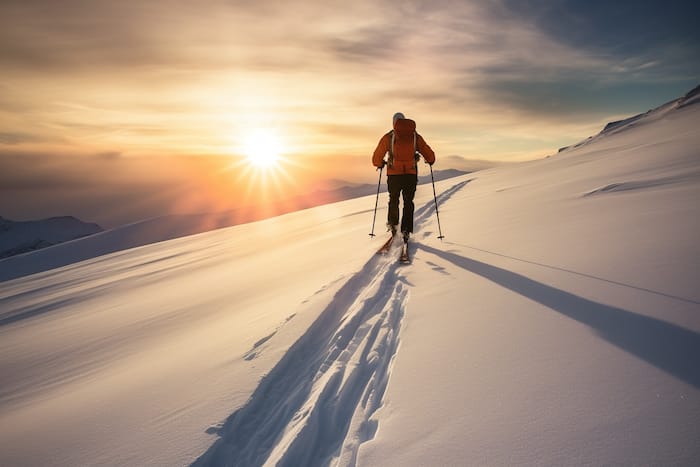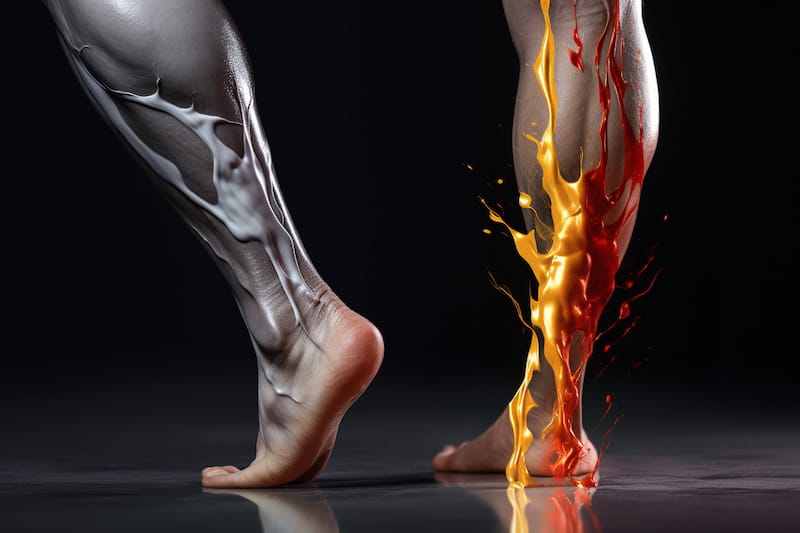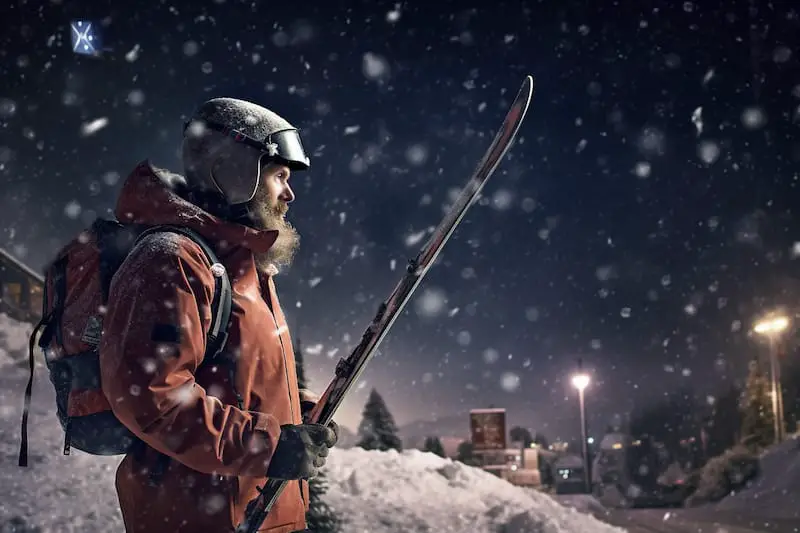Backcountry skiing and snowboarding refer to the practice of skiing or snowboarding in areas that are not patrolled or maintained by a ski resort. This type of skiing or snowboarding is typically done in remote areas, often in mountainous terrain, and requires a higher level of skill and knowledge than resort skiing or snowboarding.
Backcountry Skiing
Backcountry skiing is a type of off-piste skiing that happens in unmarked and unpatrolled areas either inside or outside a ski resort’s boundaries. This can include everything from groomed trails to extreme mountain terrain.
- Equipment: Backcountry skiers use special equipment, including skis with touring bindings that can be unlocked at the heel for uphill travel, climbing skins, and often wider skis for better float in powder. They also carry safety equipment like avalanche beacons, shovels, and probes.
- Advantages: Skis can be better for traversing flat sections and for climbing uphill, as the equipment allows for a more efficient stride.
- Disadvantages: Skiing can be more challenging to learn initially, and carrying the necessary gear can be heavier.
Backcountry Snowboarding
Backcountry snowboarding is similar but is done on a snowboard rather than skis.
- Equipment: Many backcountry snowboarders use splitboards, which can be split into two separate skis for climbing uphill with skins and then reassembled as a snowboard for descending. Like backcountry skiers, they also carry avalanche safety equipment.
- Advantages: Snowboarding can be easier to learn initially and some people find riding in powder more enjoyable on a snowboard. Snowboards can also provide better float in deep powder due to their wider surface area.
- Disadvantages: Snowboards can be more challenging to maneuver in very tight or steep terrain, and traversing flat sections or climbing uphill can be more difficult on a snowboard, even with a splitboard.
Safety
Both backcountry skiing and snowboarding require knowledge of avalanche safety, terrain analysis, and wilderness survival skills. Because backcountry areas are not patrolled, it’s crucial to be prepared for any scenario, including getting caught in an avalanche or having to spend a night in the wilderness. This is a high-risk activity and is not recommended for beginners.
You can more about if backcountry skiing is dangerous (and what to bring for safety) and what to consider if you go backcountry skiing on your own.
Choice
The choice between backcountry skiing and snowboarding often comes down to personal preference. Some people prefer the feeling of skiing, while others prefer the sensation of snowboarding. If you’re interested in backcountry skiing or snowboarding, it’s recommended to take a class or hire a guide who can teach you the necessary skills and safety precautions.
Remember, the backcountry can be a dangerous place if you’re not prepared, but with the right knowledge, skills, and equipment, it can also be a playground for some of the best skiing and snowboarding on the planet.
Learning Curve
While it’s often said that skiing is easier to pick up initially but harder to master, and snowboarding is harder initially but easier to master, this is particularly relevant in the backcountry. Skiers may find it easier to navigate variable terrain and conditions initially, but snowboarders might feel more comfortable once they’ve got the hang of things.
Mobility
In the backcountry, you’ll often encounter a variety of terrain, including steep slopes, flat sections, and everything in between. Skiers have an advantage on flat and uphill sections because they can keep their skis on and use a striding motion to move forward. Snowboarders, on the other hand, often have to unstrap and walk or, if they have a splitboard, convert their board into skis to move efficiently on flat terrain or uphill.
Stability
On steep and uneven terrain, skiers can have an advantage because they have two independent points of contact with the ground. This can provide more stability and control. However, snowboarders have the advantage in deep powder due to the larger surface area of the snowboard.
Equipment
There’s a bit more gear involved with backcountry skiing, including potentially different types of skis for different conditions, as well as poles. Snowboarders, on the other hand, will usually use just one board. But if they’re using a splitboard, they’ll also need skins and potentially crampons, and the process of transitioning the board can take some time.
Style
Finally, there’s a difference in style and culture between skiing and snowboarding, which can also influence your decision. Snowboarding has its roots in surf and skate culture and is often associated with a more laid-back attitude, while skiing is sometimes seen as more traditional. However, in the backcountry, where the focus is on safety and respect for the mountain, these differences are less pronounced.
These are just general differences and might not apply to every individual. It’s also possible to enjoy both activities and many people do. The most important thing is to choose the one that you enjoy the most and that suits your physical abilities and style.


